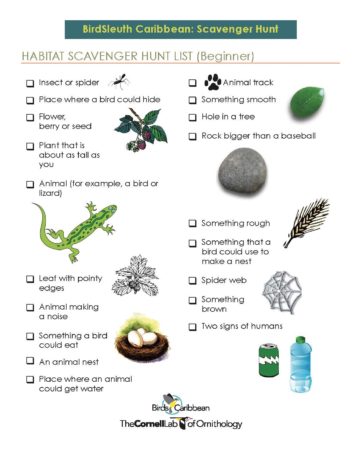Celebrate World Migratory Bird Day (WMBD) with us in our virtual “Birds Connect Our World” edition! Have fun learning about a new migratory bird every day. We have colouring pages, puzzles, activities, and more. Download for free and enjoy nature with your family at home.
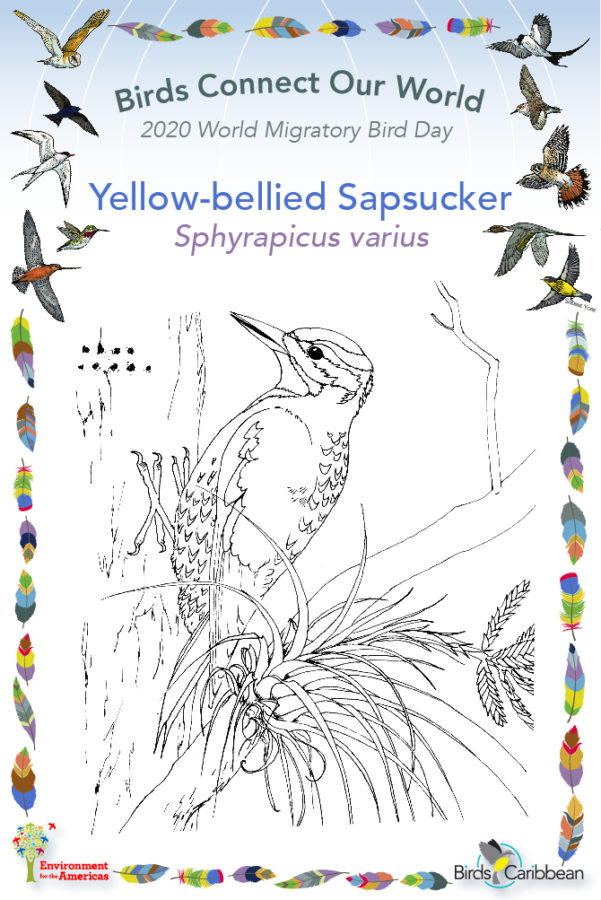
Migratory Bird of the Day: Yellow-bellied Sapsucker

As their name suggests, Yellow-bellied Sapsuckers are woodpeckers that eat sap from trees. They feed by drilling rows of small holes into tree bark with their stout, sharply pointed bills. This creates sap ‘wells’ from which to drink or ‘suck’ the oozing sap. They maintain these holes to keep the sap flowing and even defend them from other birds.
Yellow-bellied Sapsuckers have a bright red crown, black-and-white striped face and back, and a large white wing patch. Their underparts are buffy or yellowish and they have a broad black breast band. Adult males have a red throat and females have a white throat. Juveniles are brownish-gray all over.
Yellow-bellied Sapsuckers breed in eastern North America and Canada, mainly in boreal forest. It is the only woodpecker in eastern North America that is completely migratory. Some individuals travel only a short distance. Others travel as far south as Mexico, Central America and the West Indies. From October to April Yellow-bellied Sapsuckers can be found in the northern Caribbean. They are most common in the Bahamas and Cuba, but also occur in Jamaica, Hispaniola, Turks and Caicos Islands, the Cayman Islands, Puerto Rico, and the Virgin Islands.
Females tend to migrate further south than males. In Central America three females for each male have been counted! If you see a Yellow-bellied Sapsucker, look at its throat color to check if it is male or female. Do you see more females than males here in the Caribbean?
In addition to eating sap from trees Yellow-bellied Sapsuckers also eat fruit, seeds, and insects, including those attracted by the sticky sweet sap. During the winter they can be found in many places, as long as there are trees. Including forests, gardens, woodlands, and coastal areas. Learn more about this species, including its range, photos, and calls here.
Colour in the Yellow-bellied Sapsucker!
Download the page from Migratory Birds of the West Indies Colouring Book. Use the photos below as your guide, or you can look up pictures of the bird online or in a bird field guide if you have one. Share your coloured-in page with us by posting it online and tagging us @BirdsCaribbean #WMBD2020Carib
Listen to the calls of the Yellow-bellied Sapsucker
In winter, you might hear this soft mew call which they often repeat. But you are more likely to find them by their drumming, which they use to communicate with each other as well as feed.
Puzzle of the Day
Click on the images below to do the puzzles. You can make the puzzle as easy or as hard as you like – for example, 6, 8, or 12 pieces for young children, all the way up to 1,024 pieces for those that are up for a challenge!
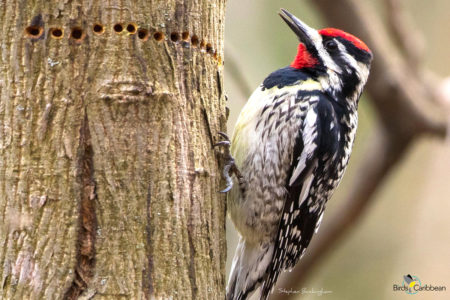
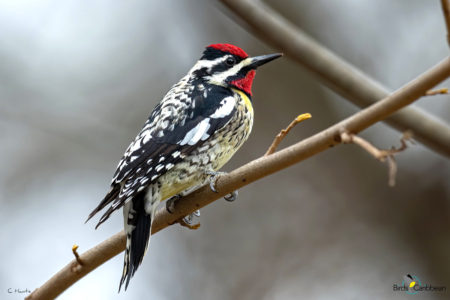
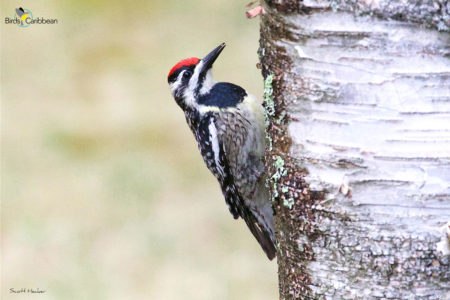
Activity of the Day
FOR KIDS: Hone your observation skills and go on a Nature Scavenger Hunt! Print the cards on sturdy paper and use a clipboard or piece of cardboard as a writing surface outside. Younger children can do side 1 of the card, older children side 2. English, Spanish and French versions are available for free download here!
FOR KIDS AND ADULTS:
- Take a walk and see if you can spot any migratory birds, listen out for any drumming woodpeckers. Use a bird field guide or the FREE Merlin bird ID app to help you identify the birds you are seeing.
- Enjoy the videos below of Yellow-bellied Sapsuckers in the wild! The first show a male (notice his red throat) drinking saps from ‘well’s he has made in a tree. The second shows a female (with a white throat), on her wintering grounds in Cuba.
- Visit MigratoryBirdDay.org for many more free activities and resources to learn about migratory birds, their threats and conservation actions you can take.

